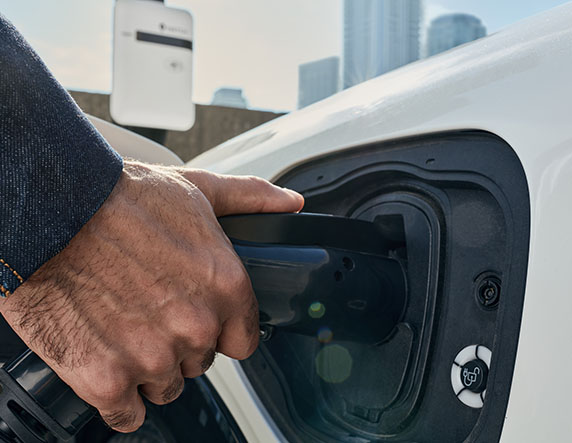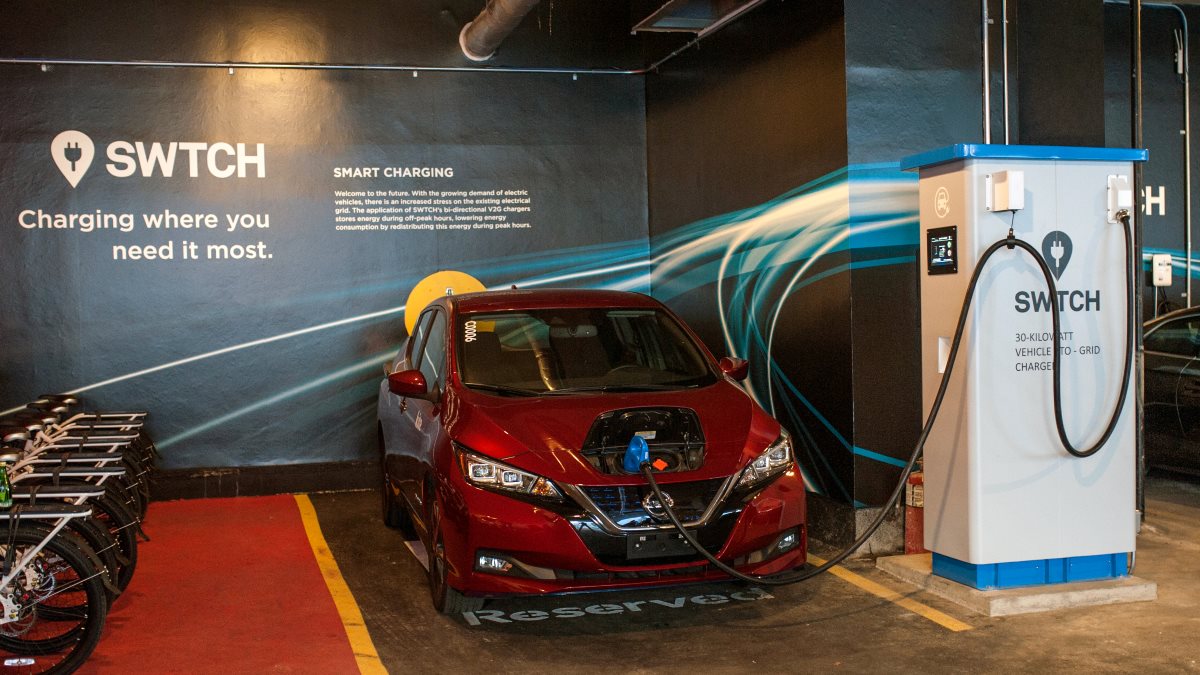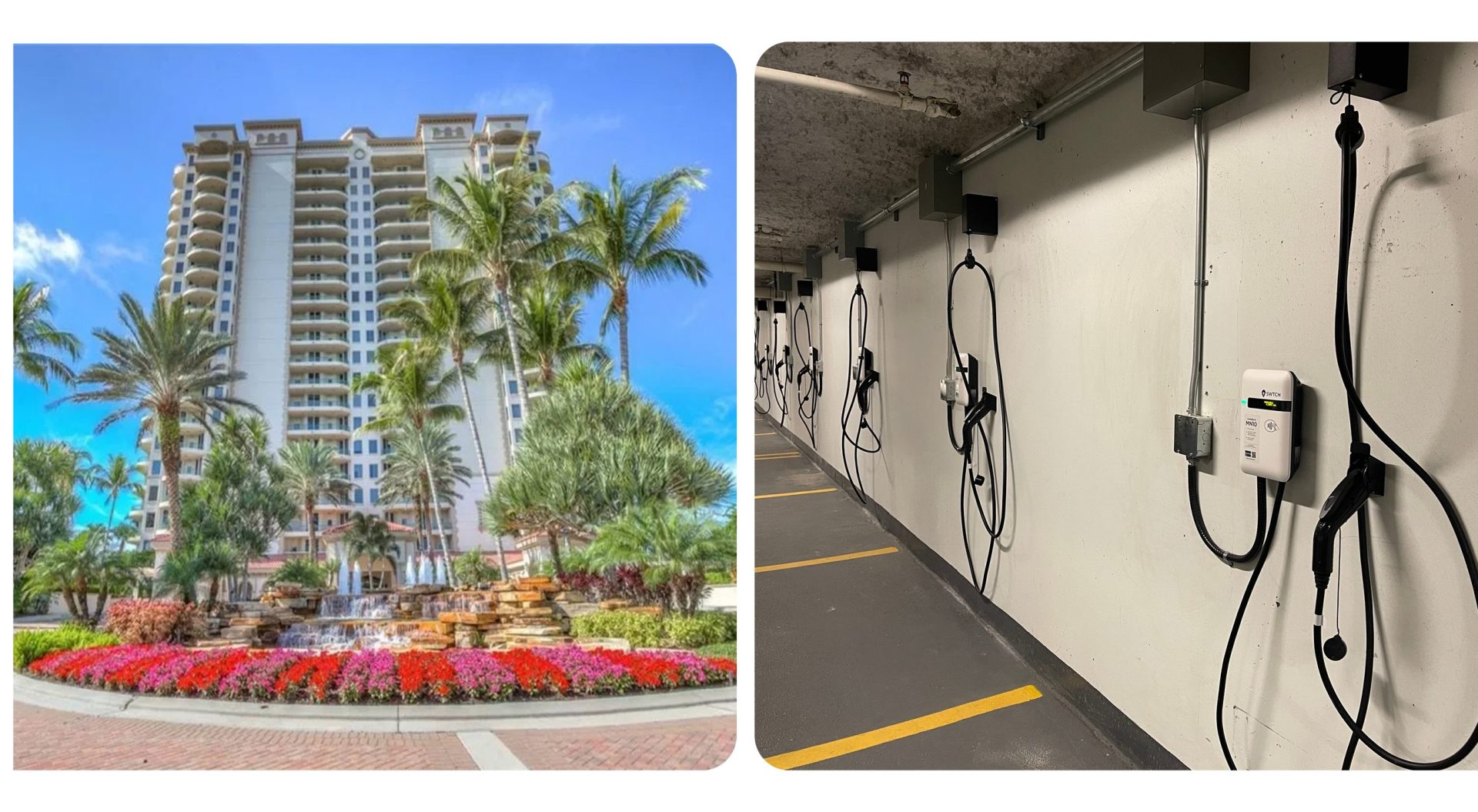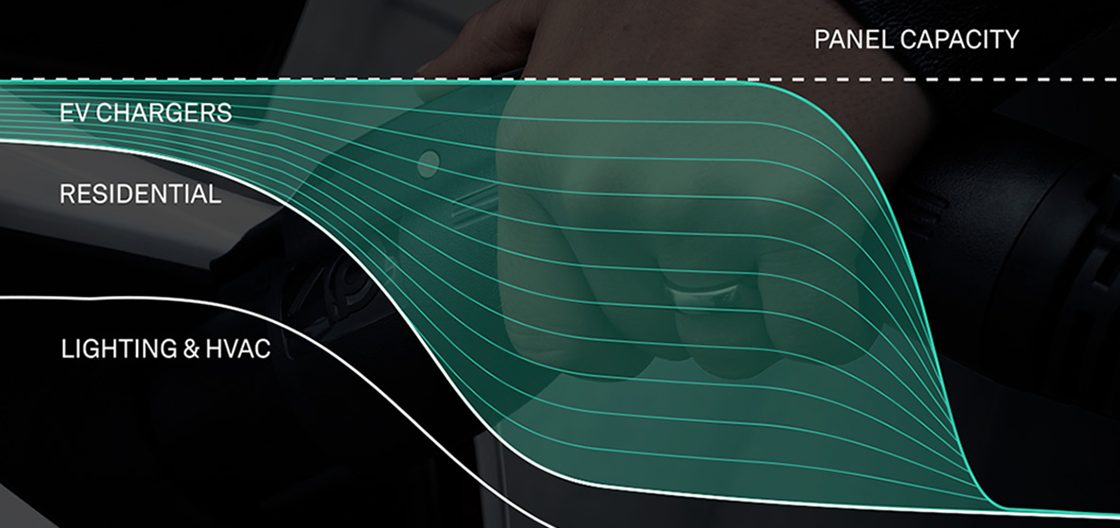Load Management: The Cornerstone of Affordable and Scalable EV Charging
If you’re considering adding electric vehicle charging to your property, there’s a tool you should know about: load management.
Load management technology can balance the new electric load created by EV charging across a building’s existing power infrastructure. Essentially, that means load management allows property managers to install more EV chargers with less infrastructure cost.
What is EV charging load management?
In a multi-tenant building, load management — also known as “load balancing” and “demand-side management” — can optimize the available electrical capacity to help balance power consumption over time.
As energy usage has expanded rapidly in the 21st century, aging infrastructure — particularly in apartments and buildings built before 2000 — can struggle to accommodate the accompanying energy requirements.
Electric vehicles and their charging needs present one such example of a challenge for buildings with older electrical systems. When you’re adding multiple EV chargers in one building, you must keep in mind your electrical panels’ overall capacity constraints.
Generally speaking, residential consumption of electricity fluctuates throughout the day. The biggest spike happens between the hours of roughly 5-10 p.m on weekdays. As people return home from work, they all simultaneously turn on energy-intensive appliances that tax electric capacity. If too many appliances demand power all at once, demand in the building will peak and cause an increase in demand charges for the electricity. In some cases, these massive surges can also cause local power outages.
Without some careful electrical planning, even just a few EVs can strain an older electrical system. Most EV drivers plug their car in at night and don’t think about it again until they get in to drive to work the next morning. As long as the car is fully charged for the commute, it doesn’t really matter when or how fast the charging took place. But a standard charger — or even a smart outlet that operates without a load management system — can’t respond to spikes or lulls in the grid’s electricity demands, so they pull the same amount of energy from the grid from the moment an EV is plugged in until the vehicle is full – adding one more large energy strain during the busy 5-10 p.m timeframe.
Given that challenge, property managers may see only three undesirable options for their buildings:
- shell out for expensive electrical infrastructure upgrades like new transformers, electrical panels, or service,
- drastically limit the total number of EV chargers available, or
- give up on installing EV chargers completely.
But there’s a better way. With an intelligent load management solution like SWTCH Control, you can safely install and manage up to ten times more EV chargers, all while keeping your existing infrastructure in place.
Several options for EV charging load management setup
There are three main configurations where load management can be effective in managing power to EV chargers:
- Circuit Sharing – several EV chargers connected to one circuit
- Dedicated Panel Sharing– a panel that house only EV charging stations on them
- Mixed-Load Panel Sharing- using panels that already have electrical loads connected, but have unused capacity that could be used for EV chargers
1. Circuit Sharing
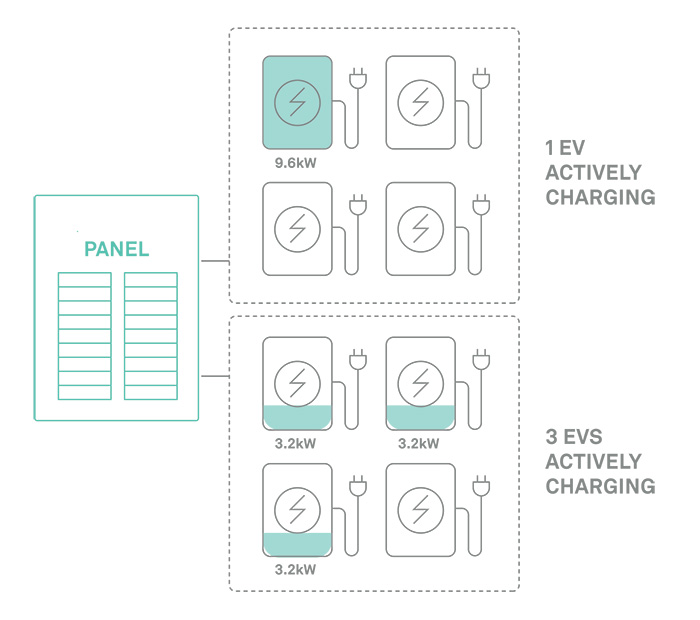
The most basic form of load management for EV chargers is by sharing the power from an electrical circuit across several charging stations. In this configuration, the EV charging stations are each installed on a shared circuit.
For example, four 32-amp electrical vehicle supply equipment (EVSEs, the technical term for charging stations or docks) could be installed on a single 40-amp breaker. These four units would share the power limitations of the circuit, with the added benefit of allowing more drivers to gain charging access. In this situation, the power would be distributed evenly between the chargers that are active at any moment in time.
2. Dedicated Panel Sharing
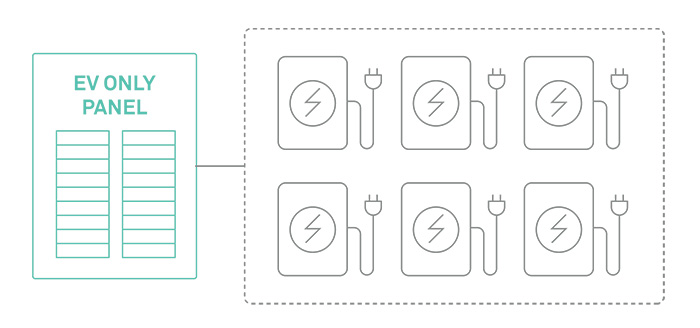
The next form of load management is designed for electrical panels dedicated to EV chargers. Rather than the previous circuit sharing form, these chargers are all installed on their own individual breaker. The benefit here is that no power sharing is needed until the panel reaches its maximum threshold.
Let’s say you have four chargers that each dispense 32 amps at full capacity on their own breakers. That would imply that you need at least four 40-amp breakers in your panel. (Per NEC Code, Article 625.41. It mandates 125% of the maximum load of the equipment, hence a 32-amp charger on a 40-amp breaker)
But if you use load management, each EV charger can reduce its output to accommodate additional demand, which means more stations.
For example, Let’s use a 100-amp electrical panel as a base case for this load (giving us 80 amps of usable capacity). When the first car plugs in, that car receives 32 amps and charges at full capacity. If two additional vehicles plug in, the 80 amps of usable capacity gets split three ways, with each car receiving 26.6 amps.
Using load management on dedicated EV panels is an excellent solution that prioritizes quality of charge, while still offering building owners the ability to increase the overall quantity of chargers.
But if you aren’t keen on shelling out for new panels and infrastructure dedicated to EV chargers, yet have some available space on your existing panels – have no fear, there is a solution.
3. Mixed-Load Panel Sharing
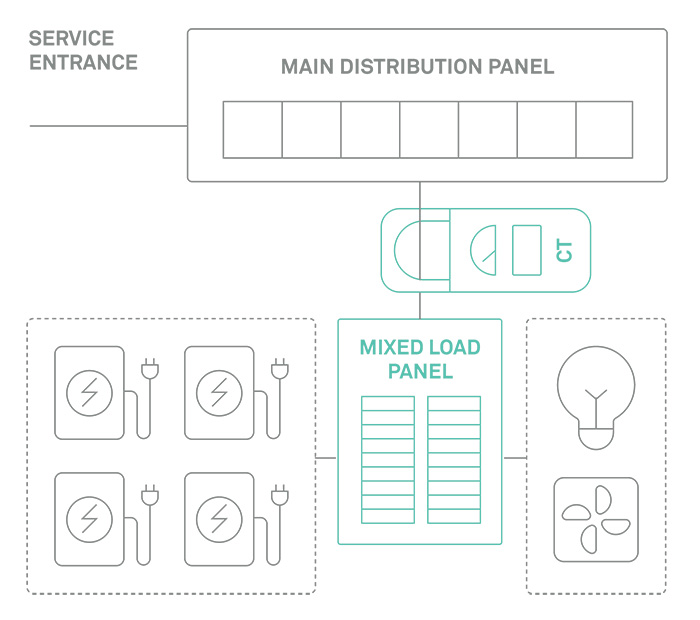
An intelligent way to get started with EV charging at your multifamily or commercial property is to tap into the excess electrical capacity on your existing panels.
More often than not, existing panels — the ones already being used in your building to power things like HVAC, boilers, and lighting — have other loads that need to be monitored, and the panel that powers them may have additional capacity. Wouldn’t it be great if you could use that available space for EV charging? Read on.
Mixed load panels are by far the most common configuration for retrofitting a multi-tenant building for EV chargers as it lowers the new infrastructure costs required, while being able to meet the short and medium term demand for charging.
To do so, this is where an intelligent load management solution like SWTCH ControlTM is necessary, allowing you to use the energy capacity you already have, but aren’t currently using.
Mixed load panel energy management uses electrical monitoring devices to accurately measure the load on the existing panels at any given time. If your building experiences a spike in electrical demand at 5 p.m., the monitoring system will detect the change, and temporarily throttle back the EV chargers to ensure there is energy for the other building appliances connected to the panel. To ensure the EVs still get the charge they need by morning, SWTCH Control will shift the EV charging to periods of lower demand throughout the night.
Manage Building Electricity with Load Management
In taking energy management to a whole new level, SWTCH Control can also provide comprehensive energy monitoring for the entire building. In this configuration, building managers can enroll in demand response programs through the utility (in markets where it’s available), offering additional revenue opportunities to offset the cost to install and maintain your chargers.
How to get started with Load Management using SWTCH Control
By using load management on a mixed load panel, building managers can save tens of thousands of dollars in unneeded electricity upgrades — and avoid or reduce demand charges.
That’s why property managers looking to update older buildings for EV chargers almost always need a load management system.
By utilizing SWTCH Control for your EV charging system, you can maximize the available power, to maximize the number of EV chargers you can safely install & manage.
Importantly, SWTCH Control is built on top of SWTCH’s network, one of only a few North American companies certified in Open Charge Point Protocol (OCPP), the common communication standard for EV charging. You should be careful not to get locked into a load management system that uses proprietary protocols that will handcuff you to one software in the future.
In addition to cost savings, SWTCH’s charging solution gives you peace of mind that your EV charging investment is in safe hands. No matter the configuration, SWTCH offers 24/7 support, 365 days a year. If an outage or anomaly is detected, the SWTCH team will proactively troubleshoot and help you resolve the issue virtually to prevent the need for a site visit from an electrician.
Adding EV chargers to your building doesn’t have to include a hefty price tag for infrastructure upgrades. With SWTCH Control in your toolkit, you can seamlessly transition into the EV-charging future while keeping your costs under control.
Looking to add EV charging? Drop us a line to discuss your EV charging needs.
